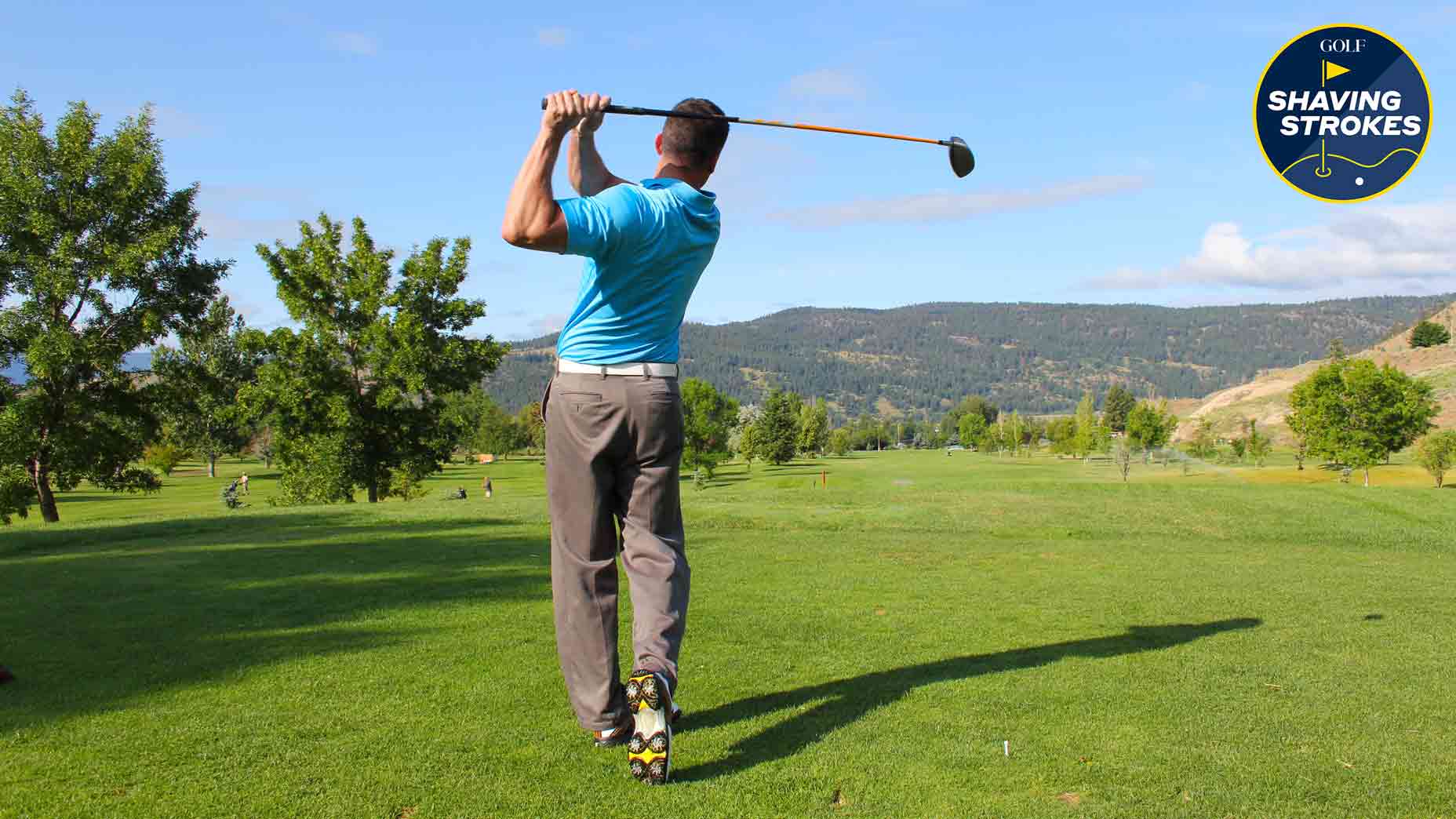Welcome to Shaving Strokes, a new GOLF.com series in which we’re sharing improvements, learnings and takeaways from amateur golfers just like you — including some of the speed bumps and challenges they faced along the way.
One of the many benefits I get from being GOLF’s Instruction Editor is hearing stories about the major gains that average golfers make. It can be simple things (like fixing a golf setup) to something more complex (like a full-blown swing adjustment).
While we all compete to beat one another on the golf course, in the end, we root for each other. So seeing a player improve is always fun — especially when you can get inside access from the teacher, revealing what steps the player used to get better.
In today’s Shaving Strokes, GOLF Top 100 Teacher Tim Cooke explains how he helped a 17.5-handicap named Allen improve to a 12.1-handicap.
Cooke told me that Allen began as a “17.5-handicap who was trending in the wrong way.” But after using the following steps from Cooke, Allen has shaved five strokes off his scorecard.
Take a look below to see how he did it — and how you might be able to use the information to improve your own game!
According to Cooke, Allen (a right-handed player) started out with a few common ball-flight tendencies — pulling his irons left, and hitting high right with his driver. This was because his club path at impact was variable both to the left and right of 0 degrees, leading to an overly shallow angle of attack with his irons. This made planning and playing a predictable ball flight extremely difficult!
This is where Cooke decided to find the root cause of the issue: Allen’s setup.
Like Allen, too much pressure on the right side with the upper body leaning away from the target is a common mistake amateurs make. Here’s what Cooke had Allen do to help correct the problem.
Day 1: Golf setup
Cooke had Allen make his spine more vertical from a face on perspective. Here, his sternum lined up over his belt buckle with a mid-iron, helping balance the upper center and lower center at address. His left hand was inner opposite left thigh, and he had about 55 percent pressure on his left side.
Quickly, things improved to a repeatable club path at impact, and his ball-strike consistency was much better after just some small setup change.
Then Cooke moved to enhancing Allen’s backswing motion, since his pivot was very limited when the two first started.
Backswing
Next, Cooke worked on Allen’s backswing, allowing the left knee to rock inwards as though it was connected to the handle of the club. This enabled Allen to feel both the knee and handle swinging together in the first move back. This helps coordinate the arm swing and the body pivot, instead of a disjointed move away from the ball with very little flow.
The result of blending the takeaway gave Allen a more complete backswing, adding more potential speed as well.
Day 2: Downswing
The two continued to work on setup and engrained backswing — but also added some downswing concepts.
Cooke had Allen “run the left side down hill,” which helped him get back to the ball and move his swing path right of the target.
“Allen hit shots on a downslope with awareness of the shoulders ‘running down the hill’ for as long as possible on the downswing. We then took this feel to flat ground,” said Cooke. “Allen’s feel was of his arms ‘lowering’ on the downswing as he ‘stepped down a hill.’
“Taking awareness from a drill or exercise and applying the player’s feel is a great way for them to learn the new pattern and take it to the course.”
In the five hours of work over two days, Cooke retooled Allen’s setup, helping him “step down the hill” for better balance — resulting in a higher percentage of flush shots.
This gave Allen the confidence he needed to focus on the shot at hand, which Cooke says is critical for improvement.
“It’s critical to reduce all the swing thoughts and drills to something that is simple for the player,” he said. “This helps them say and feel it before every shot when they’re on the golf course.”
